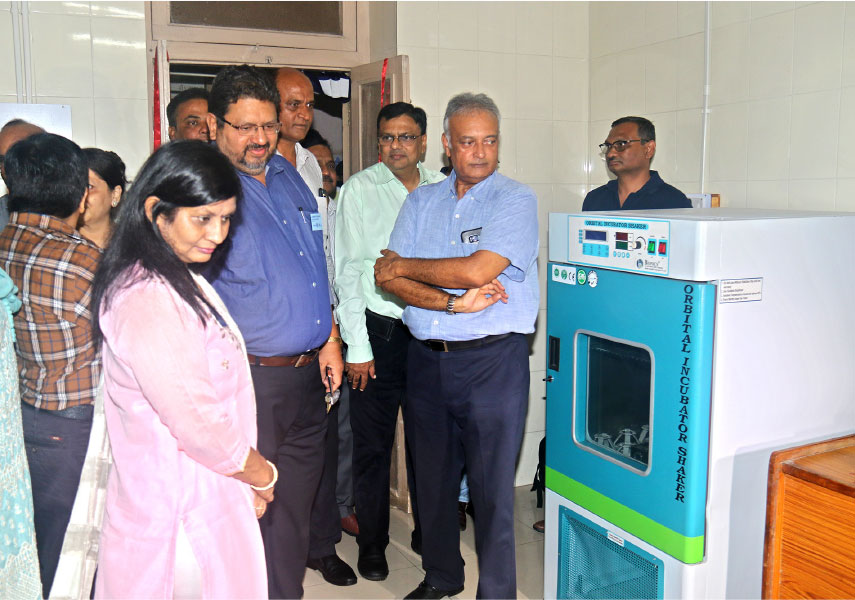RC Rajkot, RID 3060, has set up a skin bank in Rajkot at a cost of ₹50 lakh with support from RC Cary Kildare, RID 7710, USA, and TRF. An individual donor Sarla Kamdar from Nairobi, Kenya, has also pitched in with her contributions for the cause.

Outlining details of this facility, Club President Sandesh Gandhi says that an extensive research on burn victims revealed that the hospital received nearly 60 burn patients every quarter and 80 per cent of the patients were in the age group 18–40 with second and third-degree burns. Since most of the patients belonged to middle and lower middle-income groups, it was quite impossible for them to buy artificial skin or look for a donor in a short span of time. “We decided to set up the skin bank at the Civil Hospital, as most of the private hospitals in and around Rajkot were not equipped to treat burn patients and they were referred to this hospital,” says Gandhi.
The club applied for a global grant in 2019 and PDG Pinky Patel and past president Hita Mehta helped in establishing the facility.
“Skin burns leave open wounds. With the body’s first line of defence destroyed it undergoes dehydration and temperature loss. In case of severe burns, multi-organ function is affected within three to five days,” says Dr Devvrat Sukhval, a club member and the Rotarian-in-charge of the skin bank. He adds that the skin bank is a boon for patients as there is no need for blood groups to match for the grafting and anyone over 18 years who does not have any skin disease or infections can donate skin.” He explains that in case of extensive burns the electrolyte is imbalanced and impacts the internal organs. “Patients do not survive easily. With skin grafting, once the protective layer of the skin is back, the wound starts healing and it improves the survival rate of the victim.”
The team of doctors and staff at the skin bank have undergone training and can now harvest skin from a cadaver within six hours from the time of death, after consent for the donation is given. An extremely thin layer of skin, 0.4 to 0.6 mm in thickness, which consists of the epidermis and a part of the dermis, is harvested and stored at a temperature below 4 degree Celsius at the bank.
But there is more work to be done, says the Club President. “People are ready to donate eyes and other organs. But they are not convinced to donate skin as they feel it will disfigure the body.” The club will have to carry out awareness programmes to bust the myth. Dr Sukhval says that the outer layer of the skin from the thighs and legs (1,000 to 1,500 sq cm) is only used, and not the skin from the face or neck or the other visible parts of the limbs. “The demand for skin is increasing but the supply is not adequate owing to such misconceptions and lack of awareness,” he says.





